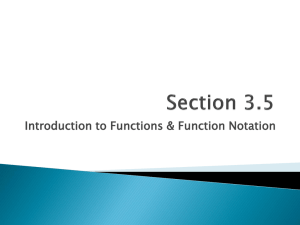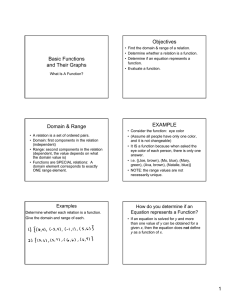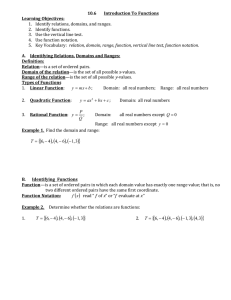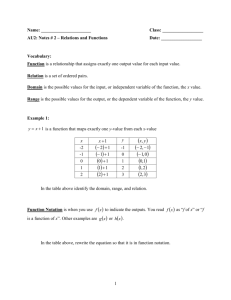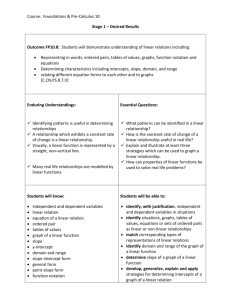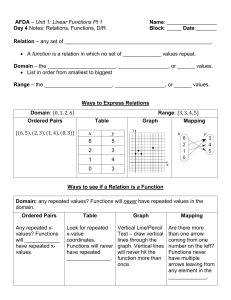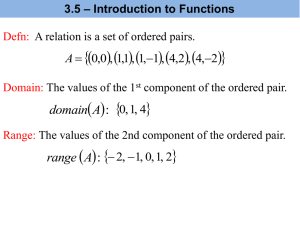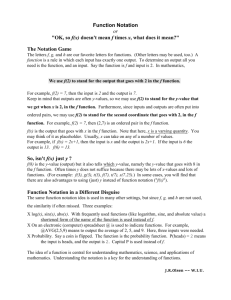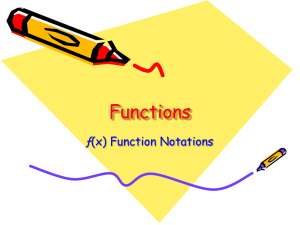Relations and Functions
advertisement
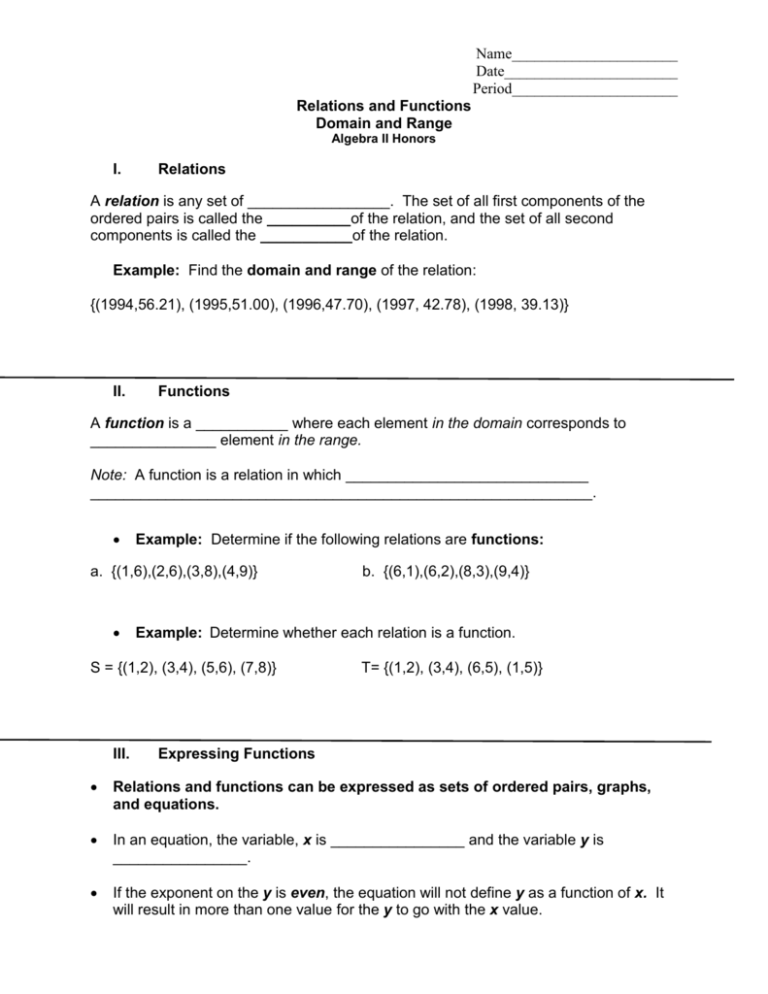
Name______________________
Date_______________________
Period______________________
Relations and Functions
Domain and Range
Algebra II Honors
I.
Relations
A relation is any set of _________________. The set of all first components of the
ordered pairs is called the __________of the relation, and the set of all second
components is called the ___________of the relation.
Example: Find the domain and range of the relation:
{(1994,56.21), (1995,51.00), (1996,47.70), (1997, 42.78), (1998, 39.13)}
II.
Functions
A function is a ___________ where each element in the domain corresponds to
_______________ element in the range.
Note: A function is a relation in which _____________________________
____________________________________________________________.
Example: Determine if the following relations are functions:
a. {(1,6),(2,6),(3,8),(4,9)}
Example: Determine whether each relation is a function.
S = {(1,2), (3,4), (5,6), (7,8)}
III.
b. {(6,1),(6,2),(8,3),(9,4)}
T= {(1,2), (3,4), (6,5), (1,5)}
Expressing Functions
Relations and functions can be expressed as sets of ordered pairs, graphs,
and equations.
In an equation, the variable, x is ________________ and the variable y is
________________.
If the exponent on the y is even, the equation will not define y as a function of x. It
will result in more than one value for the y to go with the x value.
Name______________________
Date_______________________
Period______________________
IV.
Function Notation
When an equation represents a function, the function is often named by a letter
such as f, g, h, F, G, or H. Any letter can be used to name a function.
Suppose that f names a function. Think of the domain as the set of the function's
inputs and the range as the set of the function's outputs. The input is represented by
x and the output by f(x). The special notation f(x), read "f of x" or "f at x" represents
the value of the function at the number x.
If a function is named f and x represents the independent variable, the notation f(x)
corresponds to the y-value for a given x.
Thus, f(x) = 4 - x2 and y = 4 - x2 define the same function. This function may be
written as
y = f(x) = 4 - x2
Example: If f(x) = x2 + 3x + 5, evaluate:
V.
a. f(2)
Obtaining Information From Graphs
You can obtain information about a function from its graph. At the right or left of a
graph, you will find closed dots, open dots, or arrows.
A closed dot indicates that the graph ________ _______ extend beyond this point and
the point belongs to the graph. This would _________ the endpoint.
An open dot indicates that the graph does not extend beyond this point and the point
______ _____ belong to the graph. This would __________ the endpoint.
An arrow indicates that the graph extends _______________ in the direction in which
the arrow points.
Example: Use the graph of the function f to answer the following questions.
a.) What are the function values f(-1) and f(1)?
b.) What is the domain if f(x)?
c.) What is the range of f(x)?
Name______________________
Date_______________________
Period______________________
VI.
The Vertical Line Test For Functions
If any vertical line intersects a graph in more than one point, the graph does not define y
as a function of x.
Example:
Problems:
Evaluate each function for the given values.
1. f(x) = 3x + 7
f(4) =
2. f(x) = -6 +
f(16) =
